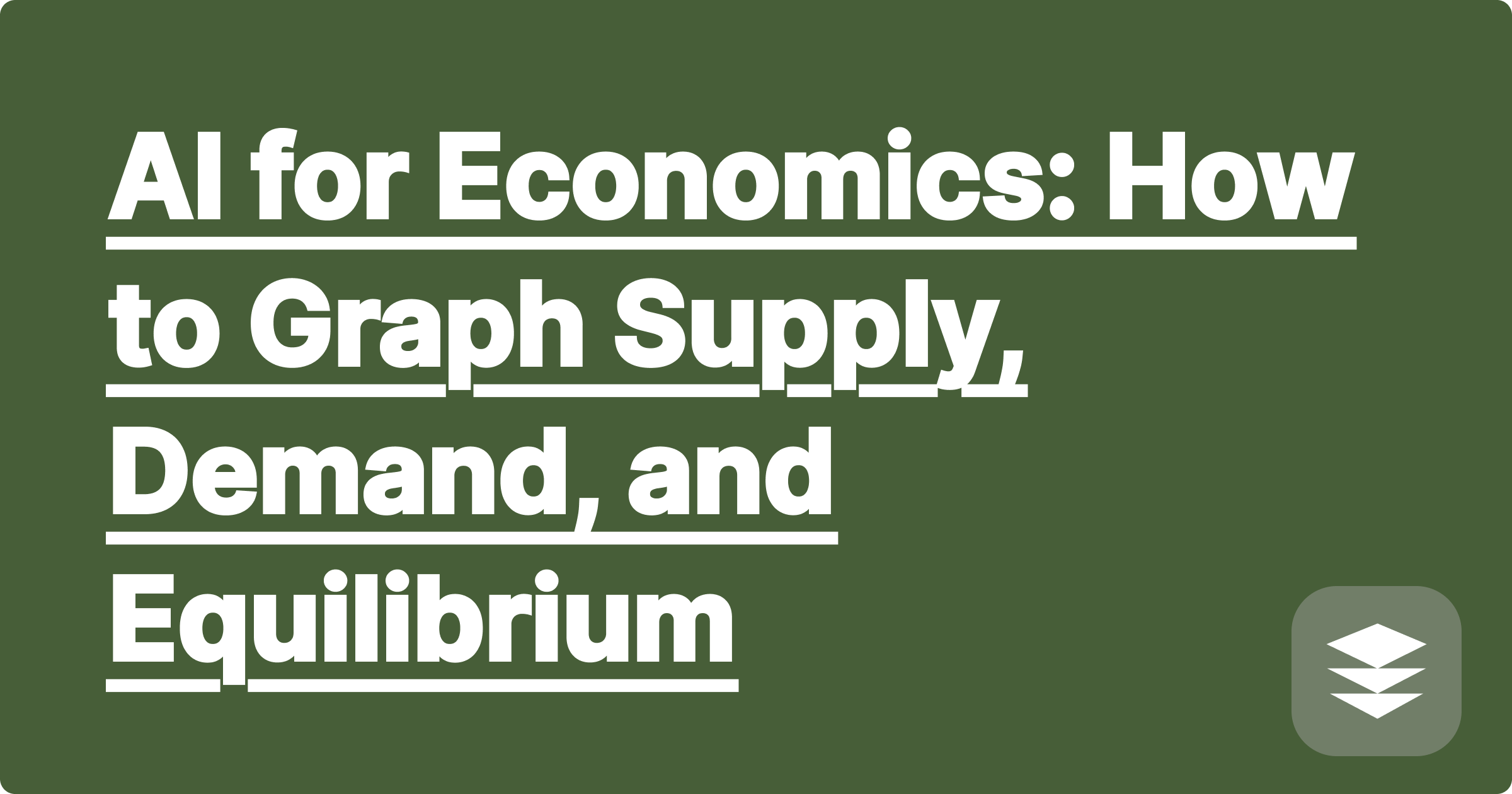
Welcome to introductory economics. You’ve just been introduced to the two most important concepts in the entire field: supply and demand. Understanding how these two forces interact is the key to everything that follows, from market structures to government policy.
The problem is, this interaction is almost always explained through graphs. You need to be able to draw the curves, label the axes correctly, find the equilibrium price and quantity, and—most importantly—predict how that equilibrium shifts when something changes. Drawing these graphs by hand for every homework problem is tedious and prone to error.
What if you could simply input the equations and have an AI instantly generate a perfect, clearly-labeled graph for you? This is the power of a modern economics graph generator. With a dedicated supply and demand solver ai, you can stop wrestling with graph paper and start focusing on the economic intuition behind the curves.
While they look simple, creating an accurate supply and demand graph requires several precise steps:
A mistake at any stage can lead to the wrong conclusion.
An AI tool like GPAI Solver is trained in the language of economics. It understands these conventions and can automate the entire workflow.
Let's see how it would handle a typical problem:
The Problem:
GPAI Solver's Step-by-Step Process:
[Image: A clean, AI-generated graph showing the supply and demand curves intersecting. The axes are labeled 'Price (P)' and 'Quantity (Q)', and the equilibrium point is clearly marked with (40, $10). Alt-text: A supply and demand solver AI generating a market equilibrium graph.]
The true power of an AI solver becomes apparent when you analyze changes in the market.
New Problem: "Now, suppose the government imposes a $2 tax on suppliers. What is the new equilibrium?"
"I always struggled to visualize how a market shift would affect the graph. With GPAI Solver, I can input a change and instantly see the new equilibrium. It’s like having an interactive whiteboard that never makes a mistake."
Q1: Can the AI handle non-linear supply or demand curves?
A: Yes. While introductory problems often use linear equations for simplicity, a powerful AI solver can handle and graph quadratic or other non-linear functions, accurately plotting the curves and solving for their intersection points.
Q2: What about concepts like price ceilings, price floors, or subsidies?
A: Absolutely. You can input these government interventions into the problem, and the supply and demand solver ai will correctly modify the graph, showing the resulting shortages, surpluses, and deadweight loss. This is an excellent way to study for policy-related exam questions.
Q3: Is this better than using a graphing calculator?
A: A graphing calculator can plot lines, but it doesn't understand economics. It can't automatically label the equilibrium, analyze shifts, or explain the concepts. An AI economics tool provides a complete analytical and visual solution, making it a far superior learning aid.
Economics is a visual science. Don't let the tedious mechanics of drawing graphs prevent you from grasping the deep and powerful insights of supply and demand. By leveraging an AI that automates the plotting and calculation, you can focus your mental energy on what truly matters: understanding the economic story behind the graph.
Ready to master market equilibrium?
[Try GPAI Solver today. Input your supply and demand equations and get an instant graph and analysis. Sign up now for 100 free credits.]
The Ultimate Study Guide for Your Data Structures and Algorithms Course
AI for Economics: How to Graph Supply, Demand, and Equilibrium
Can AI Write a MATLAB/R Script for Your Data Analysis Task?
My Professor Talks Too Fast: How an AI Notetaker Can Save Your Grade
The 'Lazy' Student's Guide to a 4.0 GPA with AI
How to Use AI to Win Your Next Study Group Session
Is Your AI Homework Helper Making You Smarter? A Scientific Look
The Perfect Gift for a Struggling Student: GPAI Credits Explained
From Procrastination to Preparation: A 3-Day Exam Plan Using AI
Reducing Cognitive Load: How AI Frees Up Brain-Space for Real Learning